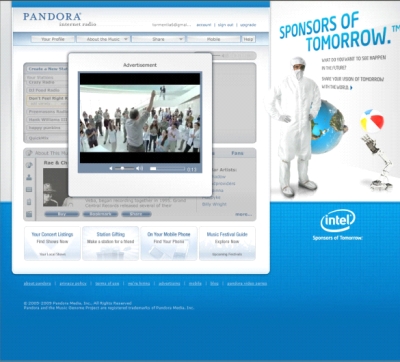I travel for my job – lucky for me, I get to go to interesting places. Whether I am flying to New York to participate in a social media summit, heading down to North Carolina to meet with a customer or spending time in the Windy City with my agency, I am constantly taxing the limits of the technology I use for my job. Smart phone – check, laptop – check, data card – check, iPod – double check (well, this isn’t really job related but a guy can’t work ALL the time now…). The 3 things that I worry about most, in this order are: battery life, connectivity, and form factor (including weight). If I don’t have good battery life, my ship has sailed – I’m not getting any work done on those long flights across country.
Clearly, working for Intel gives me some perspective on this matter as we focus on battery life as one of the key differentiators in our processor line. We’ve recently announced a new family of processors that will power the next generation of ultra-thin notebooks. Now, rather than focusing on turning your screen brightness down, disabling your wireless antenna while not connected, and frantically searching for a power outlet during layovers to get enough juice for the next segment, customers can be confident that they are choosing a notebook that will help ensure they enjoy their computing experience for longer periods than ever before.
Now, which notebook to choose? The customer that I met with this week was Lenovo. Last year they released the first instantiation of their ultra-thin lineup in the X300 – a competative PC answer to Apple’s Mac Book Air. This year’s addition to the lineup is the T400s. Gizmodo does a comprehensive review of the notebook and from talking with the good people in Cary, NC (US Headquarters for Lenovo) they are pretty confident that this will be a best seller in their family of products.
Standard on this machine is an Intel Core 2 Duo processor (as an Intel employee and share holder, I think you for that). In addition, there is the option of embedded WiMAX for connectivity in the cities (currently Baltimore, Portland, and as of June – Atlanta) that are on the Clear WiMAX network. As a data card user while traveling and a modest user of WiMAX in my home town of Portland, having embedded WiMAX capabilities is a bonus. Now the trick is expanding that network beyond the handful of cities. In addition, this is a notebook that has definitely undergone a serious design stress test. Lenovo did a great job in analyzing how their machines are used by the clientele they cater to and realized that design definitely matters. Choosing not to stray from their signature matte black shell, they instead focused on things like ‘supersizing’ keys users touch more often (ESC and Delete), better integrated tools for Voice over IP calls, and an optional solid state drive for data security. All good decisions in my book.
I’d like to get my hands on a T400s to try out for a while – it has to be an upgrade to my nearly 4 year old X60s which, while tiny, definitely forces me to sacrifice some things – like battery life and an optical drive. Yes – I’m that guy you saw searching for the power outlet in RDU and PHX last night so I could kick out the emails I did on the plane during my flight home. With an ultra-thin notebook powered by our new processor line, I imagine that my 6 hours of flying time would be productively spent without a care in the world about battery life.
David Veneski Intel, Ultra-thin #ultrathin, #wimax, Intel, Lenovo

 Tragedy is news and news the population and media vehicles flock to in overwhelming numbers. Over the last week we’ve seen that on multiple levels – from the violence in Iran around the election and the tragic death of a female protester named
Tragedy is news and news the population and media vehicles flock to in overwhelming numbers. Over the last week we’ve seen that on multiple levels – from the violence in Iran around the election and the tragic death of a female protester named  Clearly, I was channeling David Pogue of the NYTimes yesterday when I wrote my post on travel and techology. He has an interesting
Clearly, I was channeling David Pogue of the NYTimes yesterday when I wrote my post on travel and techology. He has an interesting 
